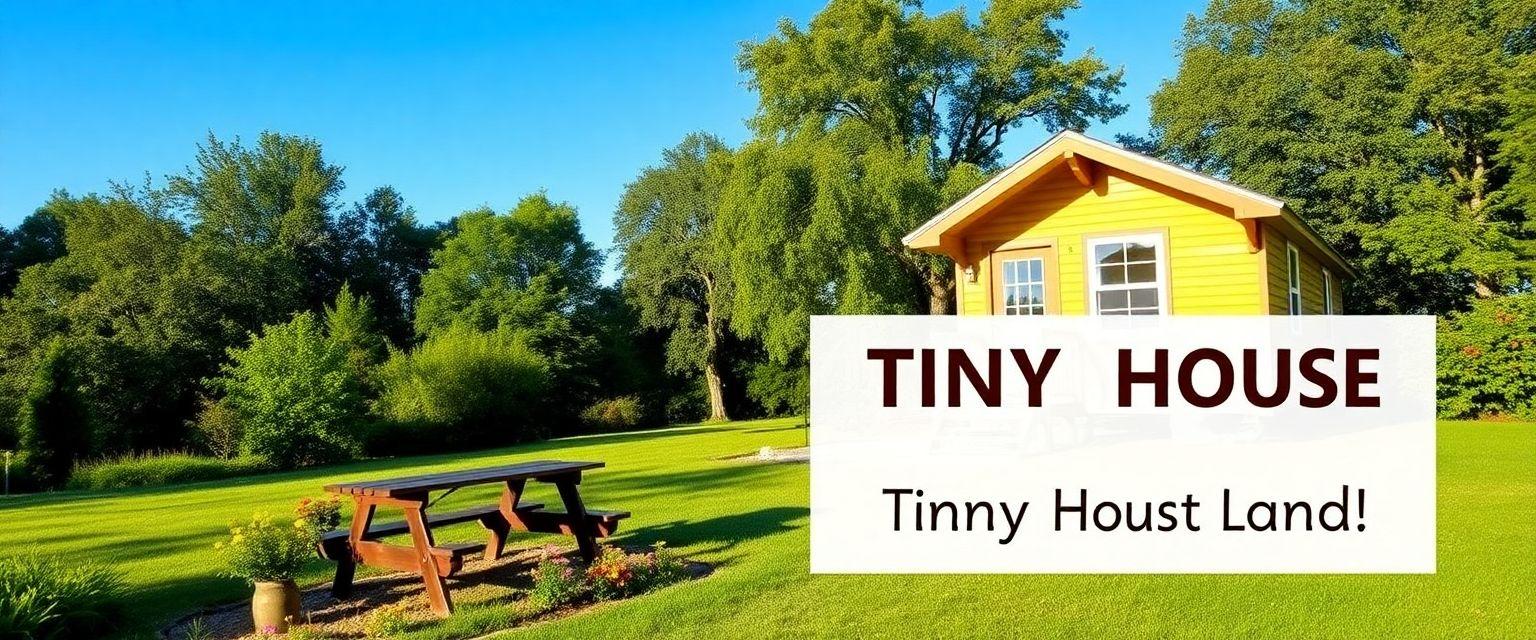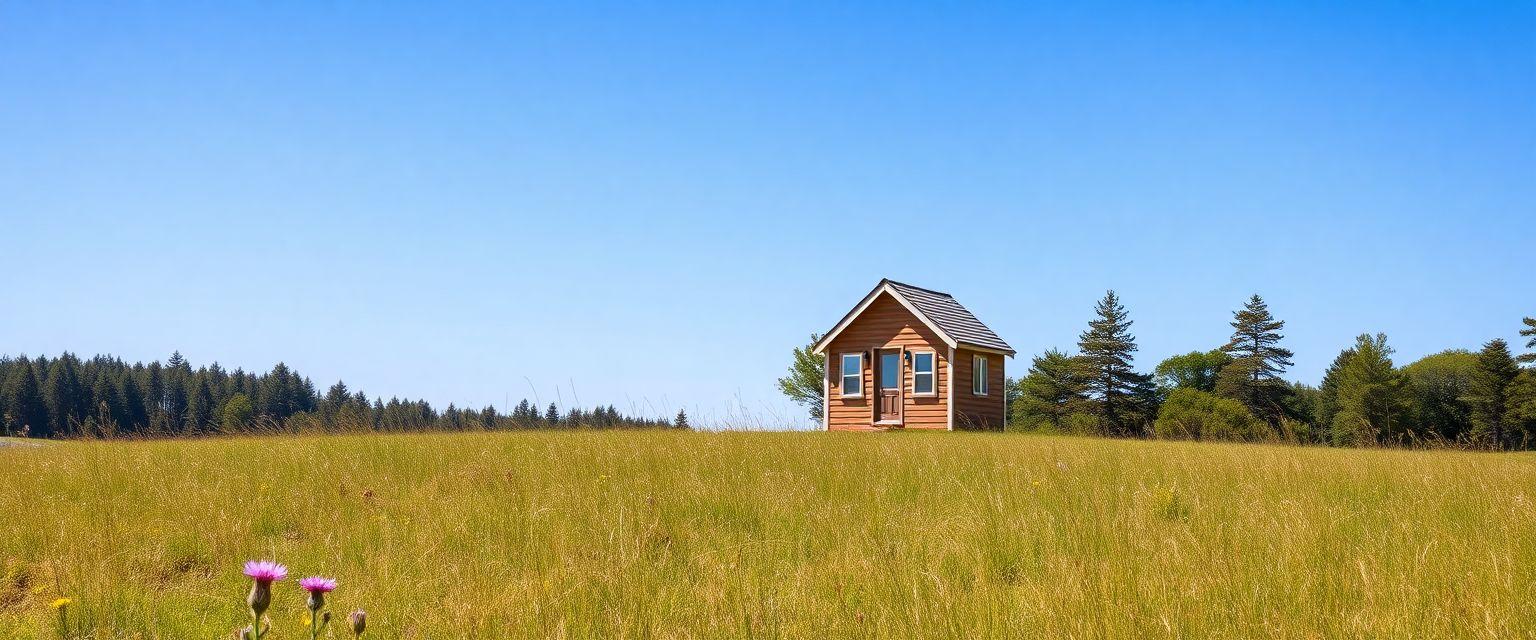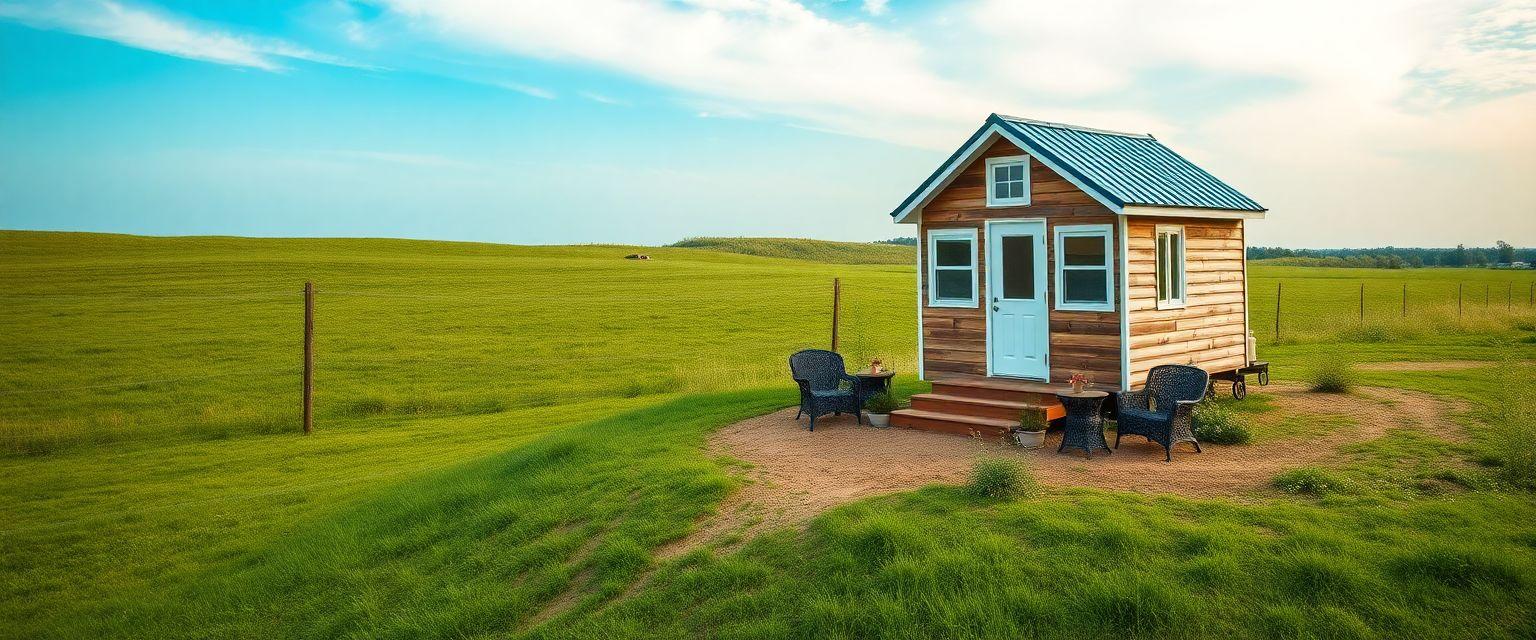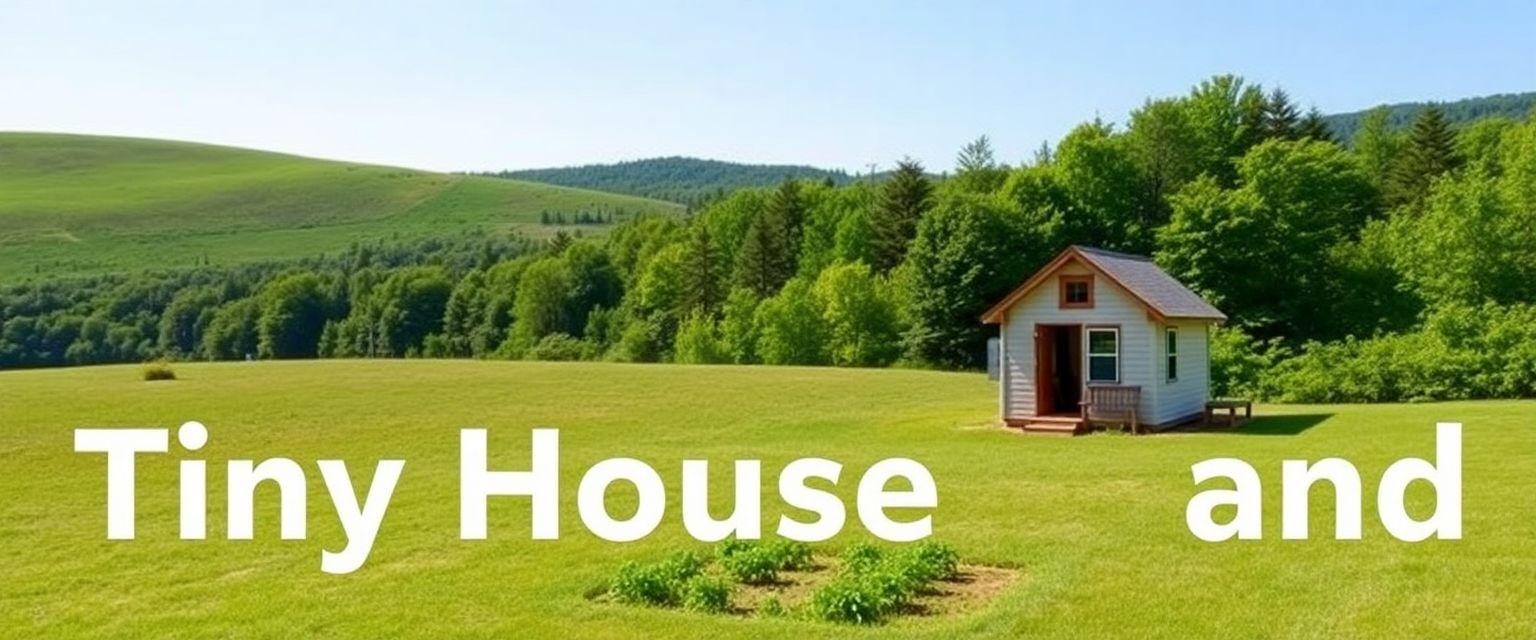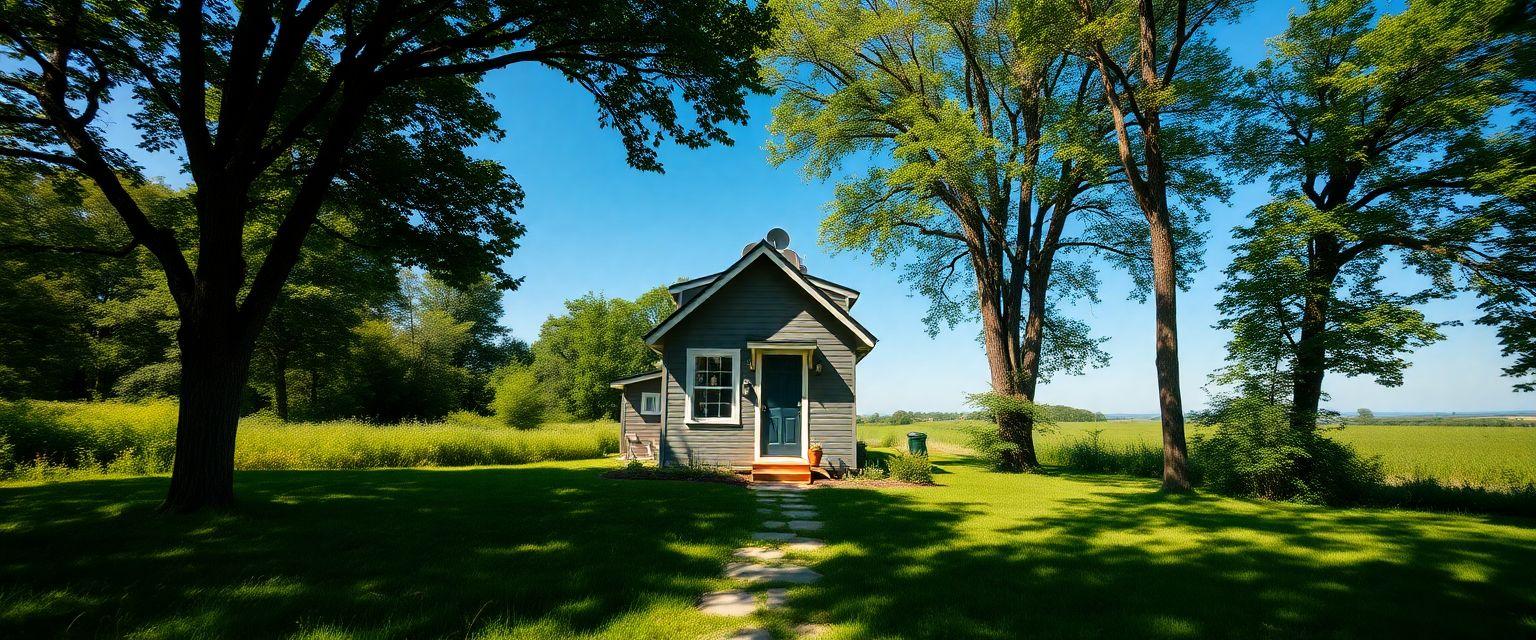Are you considering the tiny house lifestyle? Living in a tiny house can be a more sustainable, economical, and simpler way of life. However, before you can build your tiny home, you need to find a suitable piece of land to put it on. In this article, we will explore the key things you need to consider when buying land for your tiny house.
| Factor | Description |
|---|---|
| Zoning laws | Regulations that dictate how land in a certain area can be used |
| Building codes | Regulations that dictate how structures in a certain area must be built to ensure safety |
| Setback requirements | Regulations that dictate how far from the property line a structure must be built |
| Minimum square footage requirements | Regulations that dictate the minimum size a structure must be |
| Length, width, and height restrictions | Regulations that dictate the maximum dimensions a structure can have |
What to Know Before Buying Land for Your Tiny House
- Research local zoning laws and regulations
- Find suitable land with access to utilities
- Check soil quality and design/build sustainably

Researching Local Laws and Regulations
Before you buy any land for your tiny house, you must research the local laws and regulations. Zoning laws, building codes, and other regulations vary widely from one area to another, so it’s crucial to ensure that your tiny home complies with all of them. Some common zoning laws and regulations regarding tiny houses include minimum square footage requirements, foundation and anchoring requirements, and setback requirements. It’s also essential to check if there are any restrictions on the length, width, or height of your tiny house.
Start by contacting your local planning department or zoning office to obtain information on local regulations. You can also check online resources such as Tiny House Community or the American Tiny House Association.

Finding Suitable Land
When searching for land for your tiny house, consider the location, size, and access to utilities. Ensure that the property is zoned for residential use and can accommodate the size and design of your tiny house. Working with a real estate agent who specializes in tiny house land can be beneficial. They can help you find properties that meet your specific needs and requirements.
Finding affordable land can be challenging, especially in popular areas. You can consider looking for land outside of urban areas or in less desirable neighborhoods. You can also consider purchasing a smaller piece of land and building a tiny house on a foundation rather than on wheels.

Checking the Soil Quality
Before buying any land for your tiny house, make sure to check the soil quality. Soil quality can affect the foundation, stability, and longevity of your tiny house. To test the soil quality, you can hire a geotechnical engineer or use a soil test kit to do it yourself. Some common soil problems to look out for include expansive soil, which can cause foundation problems, and soil that is too sandy, which can cause erosion and instability.

Connecting to Utilities
Access to utilities is essential when it comes to living in a tiny house. Ensure that the property you’re considering has access to water, electricity, and sewer. If the property is off-grid, you will need to consider alternative methods of connecting to utilities, such as drilling a well or installing solar panels.
Connecting to utilities can be expensive, but there are ways to reduce costs. For example, you can install low-flow fixtures and water-efficient appliances to reduce water usage and use LED lighting to reduce electricity usage.

Designing Your Tiny House
Designing your tiny house is an exciting part of the process. Consider factors such as your lifestyle, budget, and the size of your family. If you’re not confident in your design skills, consider working with a tiny house designer or builder. They can help you create a custom plan that fits your needs and budget.
Building Your Tiny House
When it comes to building your tiny house, you have two options: building it yourself or hiring a builder. Building it yourself can be a rewarding experience, but it requires a lot of time, skill, and effort. Hiring a builder can be more expensive but can save you time and ensure that your tiny house is built to code.
Regardless of whether you build it yourself or hire a builder, you will need to obtain necessary permits and inspections. Make sure you’re familiar with the local building codes and regulations before you start building.
Anecdote: Overcoming zoning hurdles to find the perfect land
When my partner and I decided to pursue tiny house living, we were excited about the prospect of downsizing and living more sustainably. However, we quickly realized that finding suitable land was going to be a challenge.
After researching local zoning laws, we discovered that many areas had strict regulations regarding tiny houses. In some cases, the minimum square footage for a dwelling was larger than the size of our tiny house!
We were determined to find a way to make our dream a reality, so we reached out to a real estate agent who specialized in tiny house land. With their help, we were able to identify a piece of land that was zoned appropriately and met our other criteria.
However, the challenges didn’t end there. The land was located in a flood zone, which meant we needed to take extra precautions to ensure our tiny house wouldn’t be damaged during heavy rain.
Through a combination of research, perseverance, and working with knowledgeable professionals, we were able to overcome these hurdles and find the perfect spot for our tiny house. It’s been a challenging journey, but the rewards have been well worth the effort.
Moving In and Living Sustainably
Once you’ve built your tiny house and found a suitable piece of land, it’s time to move in and start living sustainably. Living in a tiny house offers many opportunities to reduce your environmental impact and live more sustainably.
Consider installing solar panels or a wind turbine to generate your electricity, composting your food waste, and using rainwater for irrigation. You can also reduce your energy usage by using energy-efficient appliances and LED lighting.
Conclusion
Buying land for your tiny house requires careful planning and research, but it can be a rewarding experience. Consider all the factors mentioned above to find the perfect piece of land for your tiny house. With careful planning and research, you can start enjoying the benefits of a simpler, more sustainable lifestyle.
FAQ
Who can buy land to put a tiny house?
Anyone who wants to own a tiny house on their own land.
What are some things to consider before buying land for a tiny house?
Zoning laws, utilities, and access to the property.
How do I find land to put my tiny house on?
Websites like Tiny House Listings and Zillow can help.
What if I can’t afford to buy land for my tiny house?
Consider renting land or joining a tiny house community.
How do I ensure my tiny house is legal on the land I buy?
Research local zoning laws and consult with a lawyer.
What if I change my mind and want to move my tiny house?
Consider the resale value of the land and plan ahead for relocation.
The author of this guide is an experienced land developer and advocate for sustainable living. With over a decade of experience in the real estate industry, the author has gained extensive knowledge of zoning laws and regulations, soil quality, and utility connections. They have a deep understanding of the challenges faced by those looking to purchase land for alternative housing, such as tiny houses.
The author has also conducted extensive research on sustainable living practices, including the use of renewable energy sources and eco-friendly building materials. They have written articles on the topic for various publications and have been a guest speaker at sustainability conferences.
To ensure the accuracy and credibility of this guide, the author has consulted with local government officials and environmental experts. They have also reviewed studies and reports on the impact of tiny houses on communities and the environment.
Through their expertise and passion for sustainable living, the author provides valuable insights and practical advice for those looking to live in a tiny house on their own land.





